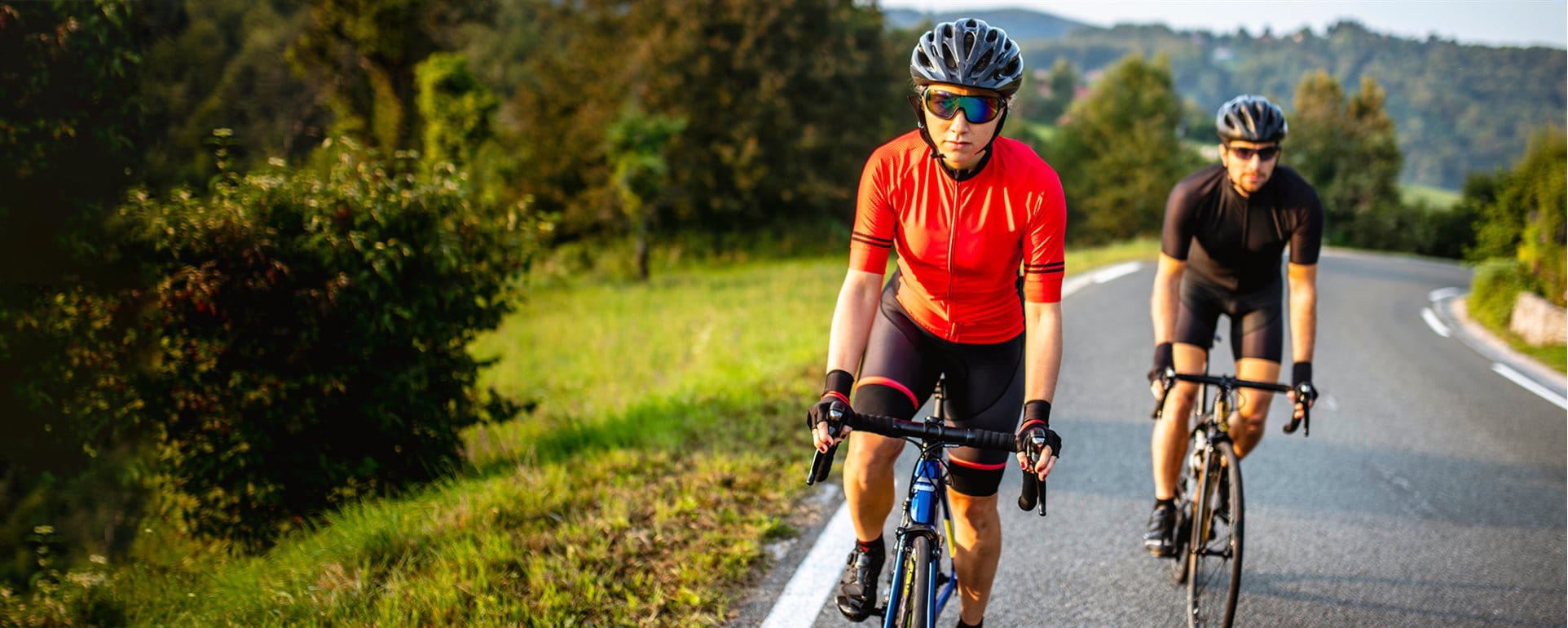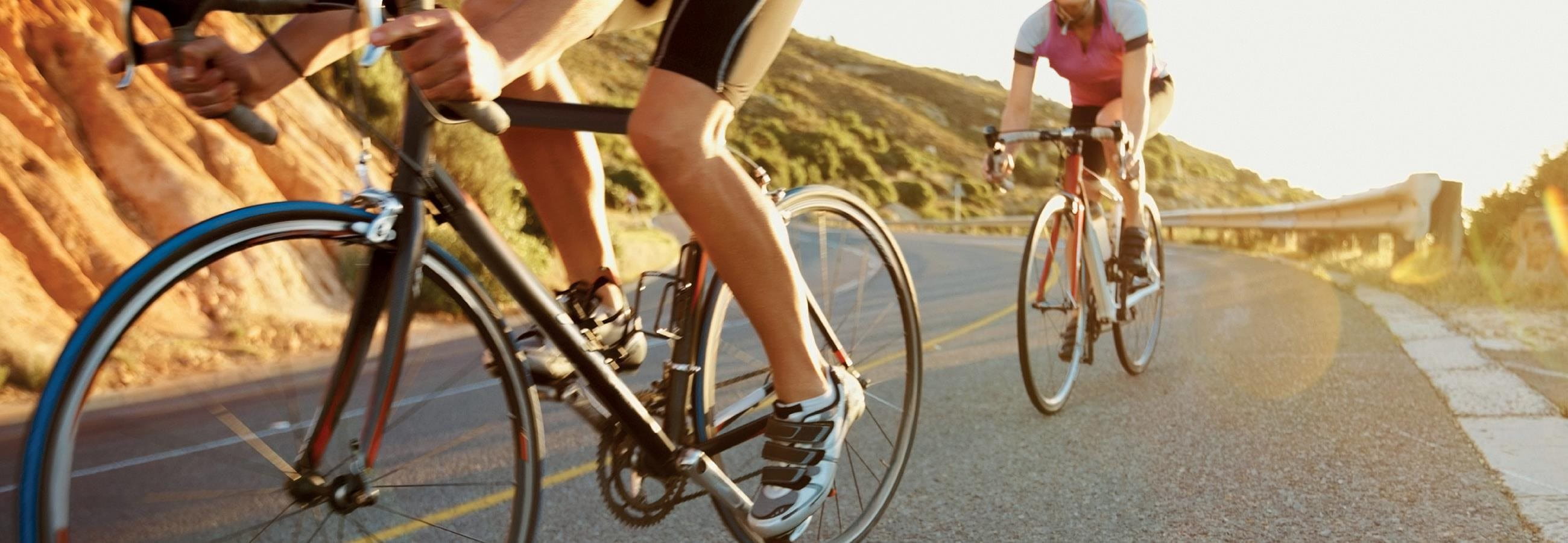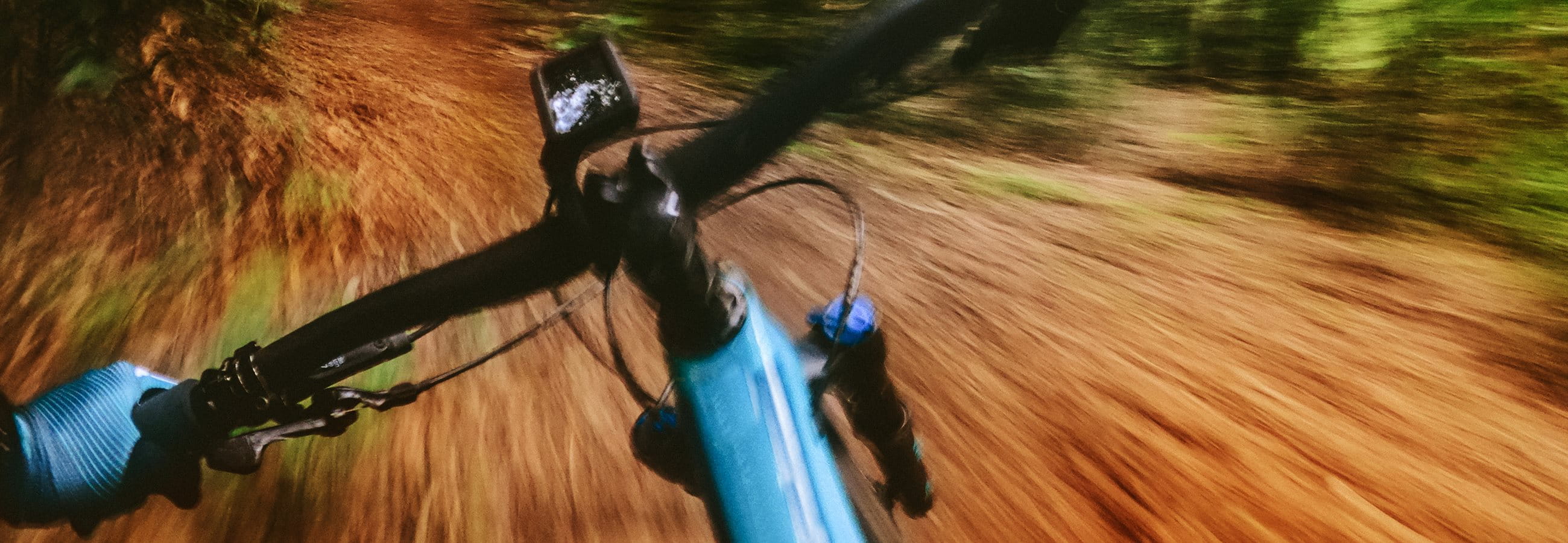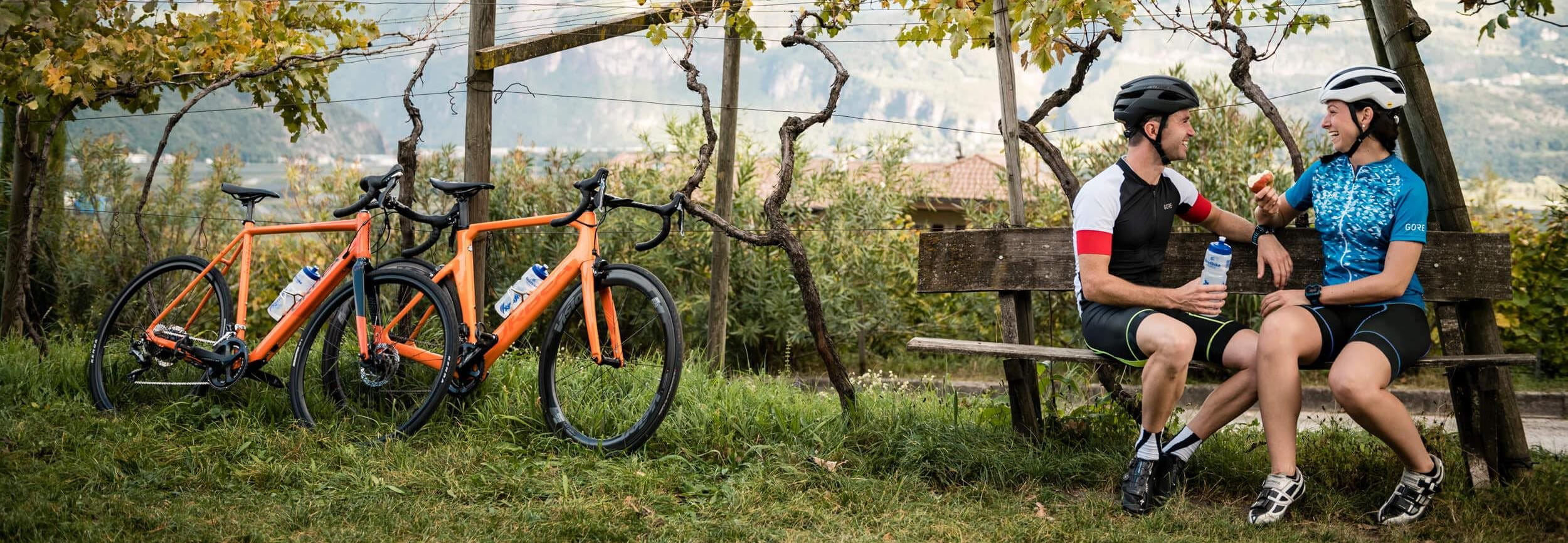How can I plan my next cycling tour?
Apart from personal preferences, safety aspects also play an important role in the planning and preparation stage. Check out these specific tips for planning your route:
- Take the characteristics of the route into consideration: The route should always match your fitness and experience level. For example, beginners will have a hard time crossing the Alps on a racing bike. A lack of experience can even be dangerous. Therefore, it would be best to start out with easy routes and to gradually increase the level of difficulty. Do you prefer cycling on asphalt, gravel or cobblestone? Do you prefer flat land, hills or mountains? Plan your cycling tour accordingly. If you are not sure how difficult a specific tour is, use online resources such as the Singletrail scale. Especially if you are going to take your kids with you, make sure the route is suitable and not too difficult, i.e. plan the route with your kids' needs and abilities in mind.
- Make sure your equipment is safe and appropriate: For a safe ride, you need suitable equipment appropriate for your chosen tour. Check whether your bike is in a roadworthy condition. If necessary, have the brakes, lights, tires etc. inspected by a bicycle shop. Suitable clothing and footwear are also important. These should always be chosen taking account of the expected weather conditions. Obviously, a cycling tour alongside a sunny lakeside requires different attire than a mountain tour through snow and ice. Proper equipment also includes a helmet as well as lights or reflectors in order to be clearly visible to others on the road. If you plan on traveling with your kids, make sure they are cautious when crossing roads and wherever there are cars.
- Schedule breaks: Regular breaks are important. Be sure to eat and drink enough and to get sufficient rest. When determining your route, you can already pinpoint the parks, rest areas or restaurants where you would like to stop. For tours that extend over several days, you also need a place to sleep and park you bicycle. If you are going to travel as a group or family, everybody should have a mobile phone in order to be able to communicate in case somebody gets lost.
- Have a map with you: The easiest way is to download maps and GPS apps to your mobile phone. You can also use a bicycle computer that shows your route and your current location.
What type of bike is suitable for my cycling tour?
Today, various types of bicycles are offered. Depending on your route, you have different choices:
- All-terrain bikes are especially suitable for long routes on different types of terrain. As they are usually equipped with racks, fenders and lights, they are also ideal for families.
- Racing bikes have very thin wheels and are designed for use on asphalt and level routes. This type of bicycle appeals especially to sports enthusiasts.
- Mountain bikes have a rugged tire tread for off-road cycling. A mountain bike is the ideal choice for those who want to be as close to nature as possible.
- E-bikes are kind to your muscles. They are good for hills and steep ascents. Important: Teenagers are only allowed to ride e-bikes from the age of 14 and need a category M (motorized bicycles) driver's license. For certain classes of e-bikes, everyone over the age of 16 needs to have a driver's license.
Depending on the route, families might prefer cargo bikes, which can be used to transport a lot of luggage or even the kids. The range of bicycles also includes city bikes, tandem bikes, recumbent bikes and other types of bike that address a variety of routes and preferences.
Do I need insurance coverage for my cycling tour?
Having your bike stolen or damaged during a tour can mean a major financial setback. For this reason, good insurance is highly recommended.
Zurich's bicycle and e-bike insurance protects your beloved bicycle or e-bike against theft, damage and destruction – globally and more comprehensively than with your household contents insurance. The bicycle insurance provides all-risk protection, i.e. covering all events that are not explicitly excluded in the insurance terms and conditions. So you can set out with peace of mind. If you want, you can take out additional coverage for roadside assistance.
More information about bicycle insurance is available at zurich.ch/en/bike.




